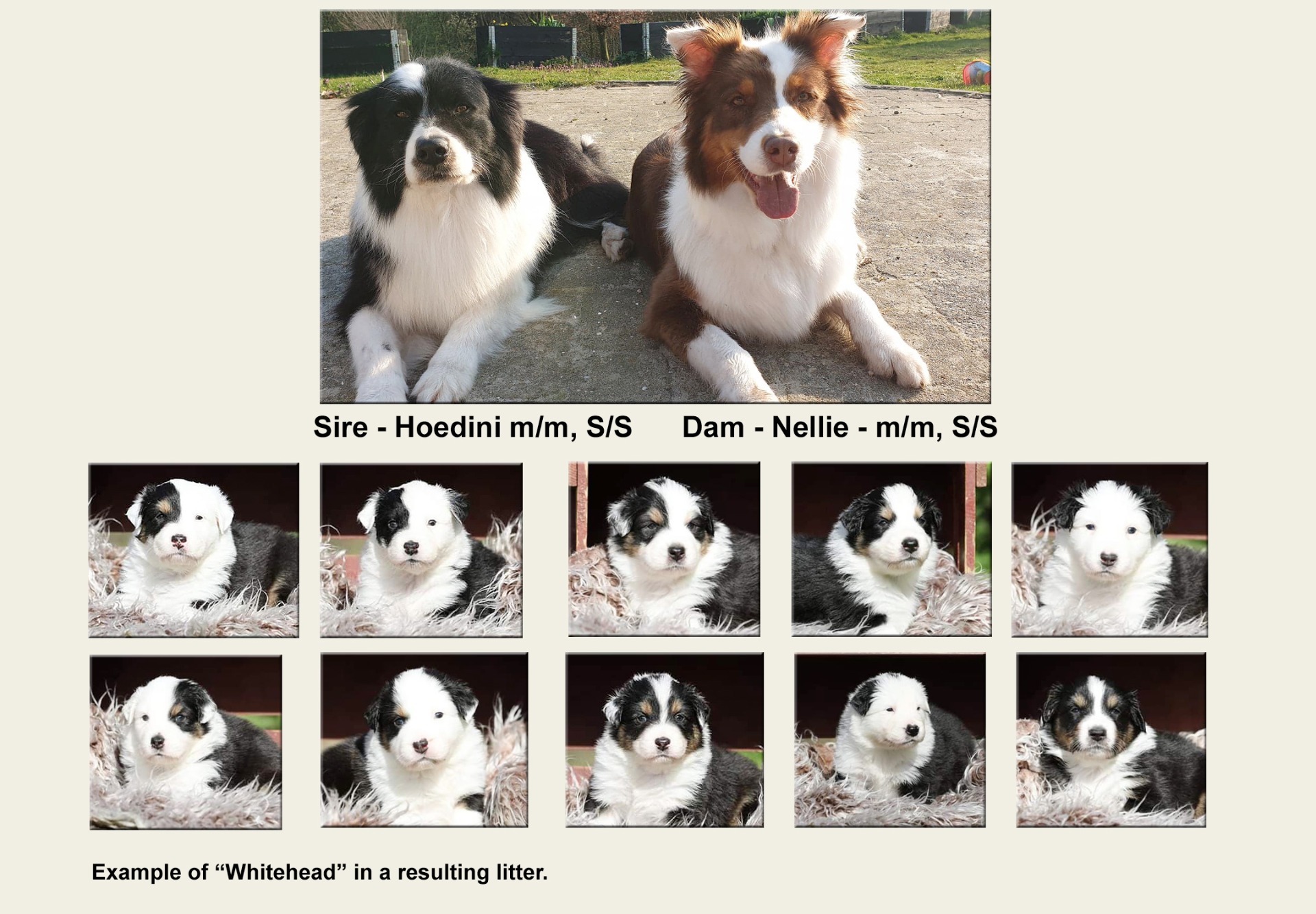Research
This distinct white
pattern is characterized by the development of white over the body starting
from the head with facial markings often asymmetric and progressing back
(rearward) over the body leaving the head, neck, chest and front leg area
predominantly white. White can also extend past the withers and up the flank
from the belly area to cover the loin and back."
The inheritance of the Whitehead trait is not totally understood and "mismarks" caused by this trait are not to standard in several breeds. For example the AKC Australian Shepherd standard reads "white on the head should not predominate, and
the eyes must be fully surrounded by color and pigment."
Breeders can often be surprised by excessively whiteheaded offspring from 2 parents who are to standard,
as the following example demonstrates.

White around the area of the ears can be a cause for deafness as with Canon's example.

A better understanding of the inheritance of the trait and available genetic testing would be
helpful to many breeders.
The following video shows the typical spread of white over the body caused by Whitehead.
Video by Sandra Hansen
